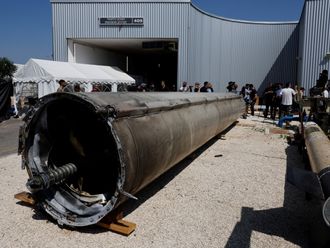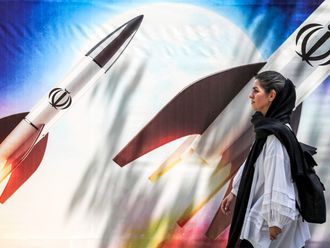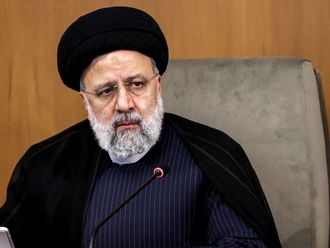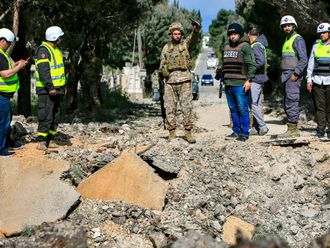Washington: It’s a scenario many feared in the fog of Syria’s multi-front war: a confrontation in which US forces, responding to a provocation, kill Russian soldiers or mercenaries on a crowded battlefield.
Russian news reports on Tuesday described just such a scenario, with an unknown number of Russian military contractors killed in a ferocious US counterattack last week. But Defence Secretary Jim Mattis and other US officials said they had no such information on casualties, and the Kremlin did not confirm any Russian deaths. US officials also said the Russian government had lodged no complaint about its citizens being killed.
What is not disputed is the fast-changing, often confusing nature of a battlefield in which forces of multiple countries are bumping up against one another, raising the prospect of violent collisions. Whether by accident or intention, such clashes risk plunging Washington and Moscow into a situation they studiously avoided even during some of the darkest hours of their relationship: their forces directly warring with each other.
Russian forces are supporting the Syrian regime in its war with opposition groups, some of which are backed by the United States. Elements of both sides are fighting the last remnants of Daesh in Syria. And US and Russian military officials maintain daily contact to avoid battlefield mishaps.
Beyond doubt is the ferocious scale of the US attack on February 7, in response to what the Pentagon called a barrage of artillery and tank fire from several hundred “pro-regime” fighters in Deir Al Zor province, an area in eastern Syria where the last Daesh fighters have converged among oil fields. Lt. Gen. Jeffrey Harrigian, commander of US air forces in the Middle East, told reporters a broad range of US air power was unleashed.
For more than three hours, American F-15E attack planes, B-52 strategic bombers, AC-130 gunships, Apache attack helicopters and Reaper drones fired on the attacking ground force, which Harrigian said was advancing under covering fire from artillery, mortars, rockets and tank rounds. The air power stopped the attackers’ advance and destroyed an unspecified number of artillery guns and battle tanks, he said, but gave no estimate of casualties or full picture of the assailants.
“As the hostile forces turned west and retreated, we ceased fire,” Harrigian, speaking from his headquarters, said in a video teleconference with reporters at the Pentagon.
In a second episode, the US struck a Russian-made T-72 battle tank on Saturday after it “took a shot at us” in the same general area of Deir Al Zor province, Harrigian said, adding that he did not know who was operating the tank.
Russian media said Russian private contractors were part of pro-Syrian government forces that advanced on oil fields in the Deir Al Zor province and were targeted by the United States. The reports cited activists who said that at least four Russian citizens were killed in Syria on February 7.
The Russian Defence Ministry charged that the incident reflected a US push to grab Syria’s economic assets under the cover of fighting Daesh.
Without mentioning the US strike, Russian foreign minister Sergey Lavrov said on Tuesday that “Americans have taken dangerous unilateral steps.”
“Those steps look increasingly like part of efforts to create a quasi-state on a large part of Syrian territory — from the eastern bank of the Euphrates River all the way to the border with Iraq,” he said.
The state news agency Tass on Tuesday cited Natalya Krylova, a municipal lawmaker in the town of Asbestos in the Urals, saying that local residents Igor Kosoturov and Stanislav Matveyev were killed in Syria on February 7. The Interfax news agency reported that a Cossack group in the westernmost Kalningrad region said a member named Vladimir Loginov was killed in combat in Deir Al Zor province. It also quoted Alexander Averin, the leader of extreme leftist group Another Russia, saying that one of its activists, Kirill Ananyev, was killed by the US strike near Khusham, where the US said its counterattack occurred.
Russian media also cited unconfirmed claims that overall casualties could have been as high as 200 and Russians could have accounted for the bulk of them. Those claims couldn’t be verified.
Asked at a Senate Intelligence Committee hearing about Russian deaths, CIA director Mike Pompeo said, “From an intelligence perspective, we have seen in multiple instances foreign forces using mercenaries in battles that will begin to approach the United States.”
He deferred on the specifics on the incident to the Pentagon.
Mattis, speaking to reporters on Tuesday while travelling in Europe, was adamant that he knew of no Russian contractors killed in the fighting, which he attributed to a surprising assault in light of obvious US advantages, including overwhelming air power.
“I don’t have any reporting” about Russians being among the casualties, Mattis said. “I can’t give you anything on that. We have not received that word” at key US military headquarters, including the Pentagon.
President Vladimir Putin’s spokesperson, Dmitry Peskov, wouldn’t comment on the reports either, saying they needed to be verified.
He also said Putin didn’t speak about anything related to Syria in a phone conversation with President Donald Trump on Monday.











